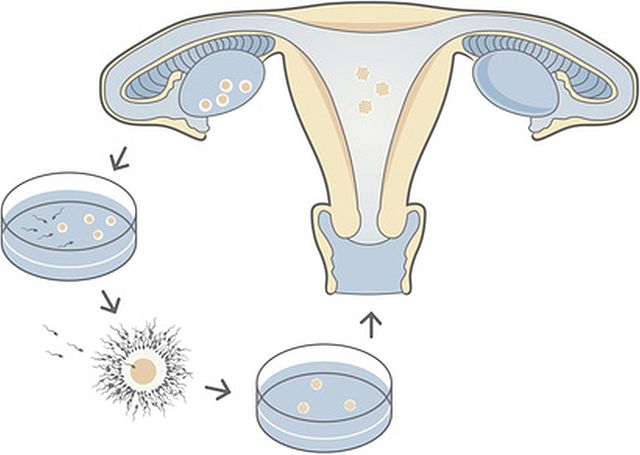
Could you explain what controlled ovarian stimulation is?
Controlled ovarian stimulation is a hormonal treatment used for assisted reproductive techniques such as IVF (in vitro fertilization). In a normal menstrual cycle, one egg matures each month and is released from the ovary during ovulation.
In controlled ovarian stimulation, high doses of hormones are administered which stimulate the ovaries to produce multiple mature eggs in a single cycle. Spontaneous ovulation is suppressed by another type of hormone, so the mature eggs can be collected from the ovaries before they are released into the fallopian tubes.
The eggs are fertilized outside the body and the resulting embryo is transferred to the uterus using a soft catheter.
How has this been linked with breast cancer risk?
Controlled ovarian stimulation increase the amount of the sex hormones estrogen and progesterone to higher levels than is normally found in the body.
Controlled ovarian stimulation increase the amount of the sex hormones estrogen and progesterone to higher levels than is normally found in the body. Since these hormones have been linked to breast cancer risk, this fertility treatment has been suspected to increase the risk of breast cancer.
Previous studies have not found a clear association between controlled ovarian stimulation and breast cancer risk, but they have been limited by short follow-up time and few breast cancer cases.
Since these treatments are relatively new, most women who have gone through them are still below the age at which breast cancer is usually diagnosed. It is also difficult to separate effects of the treatment from that of the underlying infertility.
What did you set out to investigate and what were your key findings?
We wanted to investigate if infertility and fertility treatments influence mammographic breast density, which is a strong marker for breast cancer risk. Mammographic density refers to the amount of dense fibroglandular tissue in the breast, and previous research has found that women with dense breasts have a higher risk of developing breast cancer compared to women with non-dense breasts.
In a large cohort of women attending mammographic screening, we used self-reports of fertility history and fertility treatment to identify all women with a history of infertility and those that had received fertility treatment.
We found that women with a history of infertility had slightly higher dense volume than other women.
We found that women with a history of infertility had slightly higher dense volume than other women. Among infertile women, those who had gone through controlled ovarian stimulation had higher dense volume than those who had not received any hormone treatment.
What are the implications or is there further research required to conclude this?
The results from our study indicate that infertile women, especially those who undergo controlled ovarian stimulation, might represent a group with an increased breast cancer risk. While we believe it is important to continue monitoring these women, the observed difference in dense volume is relatively small and has only been linked to a modest increase in breast cancer risk in previous studies.
To read more from the Science Media Centre’s experts on the research findings, click here.
One Comment